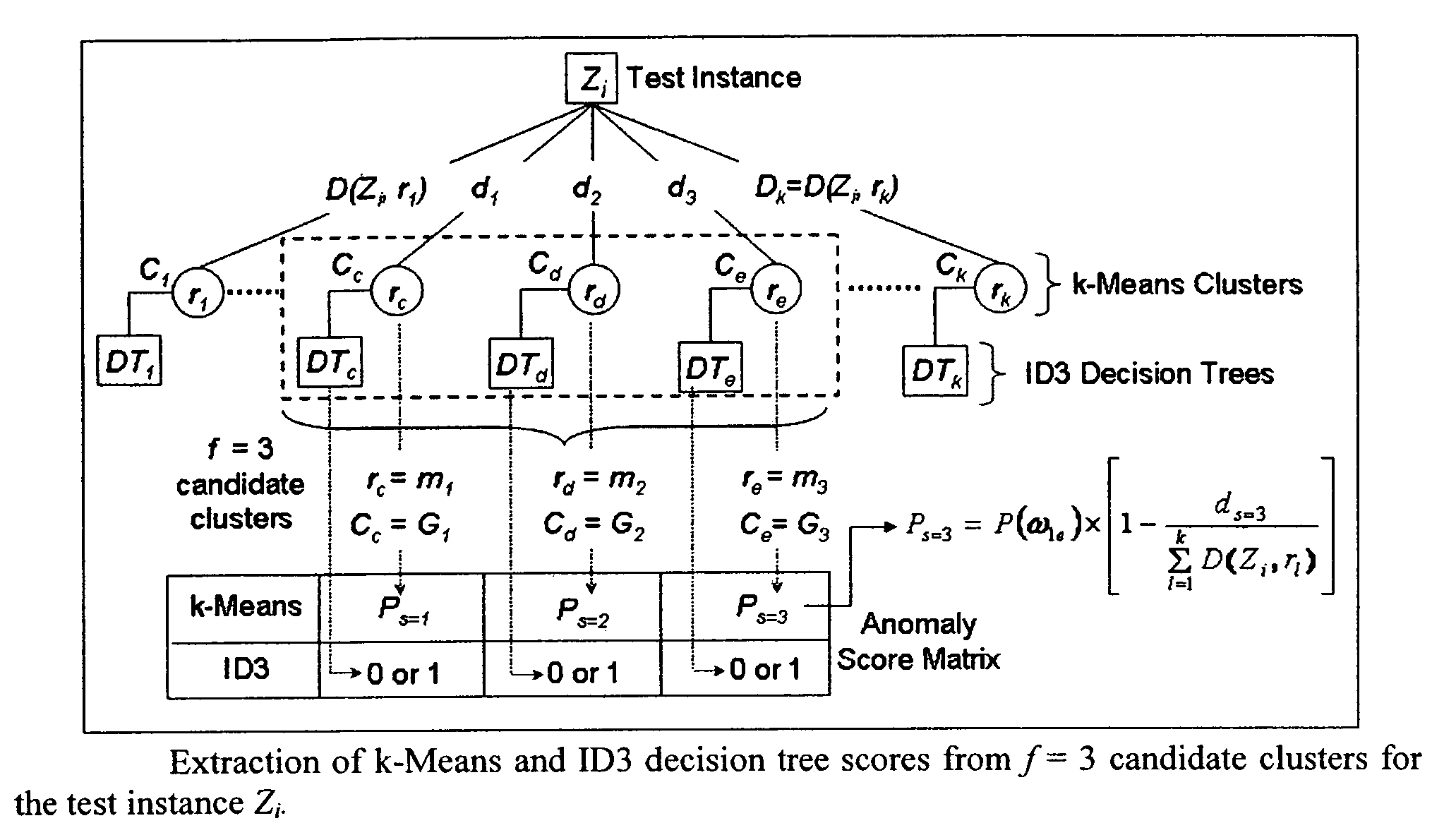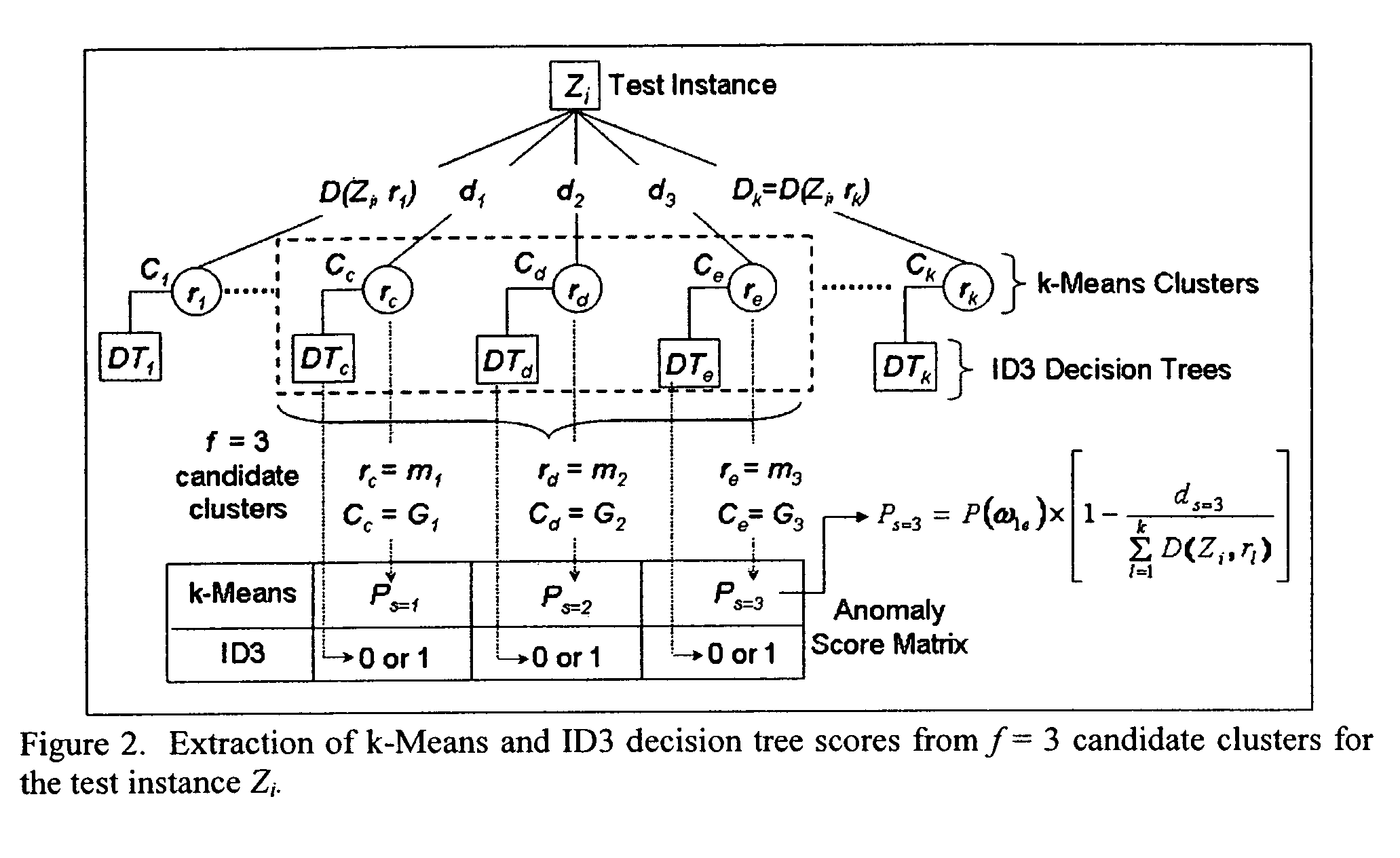Method to indentify anomalous data using cascaded K-Means clustering and an ID3 decision tree
- Summary
- Abstract
- Description
- Claims
- Application Information
AI Technical Summary
Benefits of technology
Problems solved by technology
Method used
Image
Examples
Embodiment Construction
[0040]The invention accepts an inputted training dataset (a learning instance) having known anomalous data points (each data point being a point in m dimensional space) and executes instructions to: (1) to create clusters of the dataset using k-means, and then organizes each identified k-means cluster into a decision tree using the ID3 algorithm. The resultant cluster identification and associated ID3 decision tree may be stored for later use or is directly input into the cascaded system operating on non-training set data. The k-means algorithm is used to organize the learning instance into disjoint subsets or “clusters,” where each member in a cluster is more closely related to other members in its associated cluster than to members in other clusters. After k-means clustering is complete, an assignment is made for each cluster as a whole as “anomalous” or “non-anomalous,” based upon the percentage of anomalous data points in the particular cluster.
[0041]Each cluster is then subject...
PUM
 Login to View More
Login to View More Abstract
Description
Claims
Application Information
 Login to View More
Login to View More - R&D
- Intellectual Property
- Life Sciences
- Materials
- Tech Scout
- Unparalleled Data Quality
- Higher Quality Content
- 60% Fewer Hallucinations
Browse by: Latest US Patents, China's latest patents, Technical Efficacy Thesaurus, Application Domain, Technology Topic, Popular Technical Reports.
© 2025 PatSnap. All rights reserved.Legal|Privacy policy|Modern Slavery Act Transparency Statement|Sitemap|About US| Contact US: help@patsnap.com



